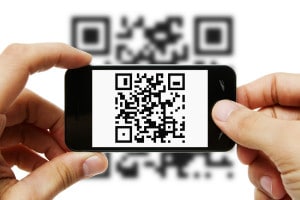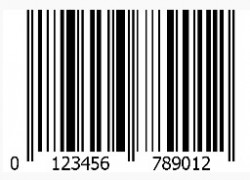 Have you considered using barcodes or QR codes in your IT Asset Management program? Both of these provide an easy way to uniquely identify an asset and access information about it. Let’s look at the differences between barcodes and QR codes, and the relative advantages of each one, when used in an IT Asset Management program running on Microsoft SharePoint.
Have you considered using barcodes or QR codes in your IT Asset Management program? Both of these provide an easy way to uniquely identify an asset and access information about it. Let’s look at the differences between barcodes and QR codes, and the relative advantages of each one, when used in an IT Asset Management program running on Microsoft SharePoint.
The Benefits of Using Barcodes
Barcodes encode a number that is up to a maximum of 20 digits in the familiar format of vertical lines with varying widths. They can only hold numbers, and therefore, cannot include hyperlinks or textual information.
The number uniquely identifies the asset. A barcode scanner can “blip” the code and instantly know the number. This saves the trouble and possible mistakes of entering the number manually. With the number read by the scanner, a SharePoint IT Asset Management application can use it to record new assets, check assets in and out, update asset status, and conduct inventory and audits, as well as many other purposes.

Barcodes are simple to generate and read. They provide an easy way to enter in a unique number to initiate whatever action needs to be taken on the asset or in the database. If the number cannot be read by the barcode reader, the number is usually visible under the lines and can be typed in.
The Benefits of Using QR Codes
A Quick Response code (QR code) is a two-dimensional matrix that can hold up to 7,089 digits or 4,296 alphanumeric characters, which is obviously much more information than the 20 digits in a barcode.

Because its storage is in two dimensions, the code can be read from various angles and distances, unlike a barcode, which must be scanned in a relatively defined position. In addition, since the QR code is created with an algorithm that allows for a 7 to 30% error margin, it will often be readable when the item or code in question is dirty or damaged. This error margin will also allow for creative use, such as altering the QR symbol with a logo, colors, keyword, picture, etc.
The QR label is scanned by a QR reader. This can be a specific scanner device, but quite often is a QR reader app running on a smartphone or tablet. There are QR reader apps for Android, iOS, Windows Phone, and other mobile operating systems.
While a barcode can display a simple asset number suitable for inventory tracking, a Quick Response code can give immediate access to a vast supply of data and extensions. With a smart phone/tablet and one of the many readily available QR Code reading applications, the scanned label can display text and product information, Web pages, Google Map locations, telephone numbers, text and email messages, support contact information, and calendar events, or give access to a Dropbox File.
The act of hyperlinking from assets with QR labels opens up many possibilities of expanded usage and mobility. For example, in a SharePoint Asset Management program, an asset’s detail page could be opened in the mobile device by the inclusion of a URL in the QR label. Or important data entered in the asset record in SharePoint could be displayed on the QR reader screen. Calendar events, contact information, emails, links to a file, map locations, and more are just some of the other possible uses.
Using Barcodes or QR Codes For Your IT Asset Management Solution
Simply put, a barcode provides a unique number that can be used in various ways with databases and associated applications. The number serves to identify the asset in this process. A QR code, by contrast, can contain information, text, links, and more within the code itself. The reader app can then use that information in many useful and functional ways.
Barcodes have a long history of usage and are simpler to use. The labels are also generally smaller than QR codes and so can more easily fit on device. However, QR codes provide more information and have a variety of uses. Though not yet as commonly used as barcodes in asset management, it is likely that QR codes will grow in popularity due to the extra functionality they provide.
With the ease of creation, flexibility of use, and ready access to the data you need, using barcodes and/or Quick Response code in your IT Asset Management program should be considered an important and integral value component.
Creative Commons Attribution: Permission is granted to repost this article in its entirety with credit to Crow Canyon Systems and a clickable link back to this page.

